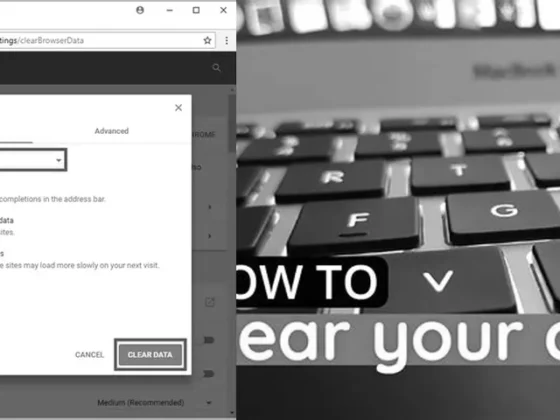Do Schools Spy Through Chromebooks: Are schools using Chromebooks to spy on students? It’s a question that has sparked curiosity and concern among parents and students alike. In this blog post, we’ll dive into the world of classroom monitoring and explore the role of “Student Vision” by Netop in keeping an eye on students’ activities. From understanding browsing history access to privacy concerns surrounding camera access, we’ll uncover the truth behind these Chromebook surveillance claims. So, grab your Chromebook and let’s navigate the balance between technology, privacy, and education.
The Role of “Student Vision” by Netop in Classroom Chromebook Monitoring
In an age where technology is intertwined with education, schools have adopted measures to ensure that digital devices are used appropriately. One such measure is the implementation of “Student Vision” by Netop on Chromebooks provided to students. This software is not designed to spy, but to enable a certain degree of classroom discipline and focus.
Student Vision offers teachers a way to guide the class effectively by providing a set of tools that allow for monitoring and managing student activity during school hours. By using this tracking software, educators can supervise the content students are accessing and ensure that the Chromebooks are being used for educational purposes.
Functionality and Ethical Use of Monitoring Software
When discussing the capabilities of “Student Vision,” it’s crucial to address the ethical implications of monitoring students. The software is not a tool for surveillance but a means to maintain a conducive learning environment. It grants teachers oversight over Chromebook activity to prevent distractions and potential misuse of school resources.
Moreover, the software does not give teachers unlimited control. The scope of their authority is confined to educational oversight, ensuring that privacy concerns are balanced with the need for a structured learning experience.
Understanding Browsing History Access on School Chromebooks
One common question that arises is whether schools can see a student’s browsing history on Chromebooks. The answer lies in the level of access provided by the school’s network and the devices in question. On school Chromebooks, there’s a greater likelihood that browsing history can be monitored.
Schools have a vested interest in keeping their network secure and ensuring that students are not accessing harmful or inappropriate content. To this end, administrators can review the cache of websites visited during a session, which serves as a log of student activity.
Privacy on Personal Devices vs. School Computers
When it comes to personal devices, the situation is different. While schools may implement certain measures on their networks, such as content filters, tracking browsing history on a student’s personal device is much more challenging and often beyond the school’s technical capabilities and legal rights.
Students and parents should be aware that the privacy expectations are not the same on school-provided Chromebooks as they are on personal devices. It’s essential for users to understand the boundaries of their privacy when using school equipment.
Camera Access and Privacy Concerns on Chromebooks
In the discussion of privacy, the camera on a Chromebook is a significant concern for many. It is crucial to understand that administrators cannot access the cameras on these devices without consent. Google’s privacy policies and various laws protect users against unauthorized access to their computer’s camera.
The concern about camera access is mostly rooted in privacy issues and the potential for misuse. However, schools are bound by strict policies and legal frameworks that prevent them from using the cameras on Chromebooks without explicit permission from the user.
GoGuardian Teacher: Classroom Management for Chromebooks
Another tool that teachers use for classroom management is GoGuardian Teacher. This tool is specifically designed for educational settings and provides a way for teachers to see what students are doing on their screens during class.
GoGuardian Teacher is not a spying tool but a classroom management software that helps in maintaining focus and ensuring students are on task. It helps teachers to identify students who might be struggling or those who might be veering off the lesson plan. With features like screen viewing, tab control, and activity timelines, GoGuardian Teacher serves as a digital aid for educators in a technologically advanced classroom.
Best Practices for GoGuardian Teacher
While GoGuardian Teacher provides significant advantages in managing a digital classroom, it’s essential that its use is governed by clear policies and best practices. Transparency with students and parents about how and why GoGuardian Teacher is used can alleviate concerns and foster a trustful educational environment.
Teachers are encouraged to use GoGuardian Teacher responsibly, ensuring that its functionalities are employed solely for educational purposes and not to infringe on students’ privacy.
Balancing Technology, Privacy, and Education
The integration of Chromebooks and monitoring software in the classroom is a testament to the changing landscape of education. As schools navigate the intersection of technology and learning, the key is to balance the benefits of these tools with the legitimate privacy expectations of students.
Effective communication between schools, teachers, students, and parents about the use and scope of software like “Student Vision” and GoGuardian Teacher is vital. By being transparent about the functionalities and limitations of these tools, schools can ensure that they are used ethically and responsibly.
Conclusion: Embracing Technology with Mindful Oversight
In conclusion, while Chromebooks in schools are equipped with software that allows for certain monitoring capabilities, the intention is not to spy but to facilitate a better educational experience. Schools must adhere to strict privacy laws and ethical standards, ensuring that any form of monitoring is done with consent and for legitimate educational reasons.
By understanding the role of these tools and the policies governing their use, students and parents can feel more at ease about the use of Chromebooks in the classroom. As technology continues to evolve, so too will the ways in which we manage and respect the digital privacy of students in an educational setting.
FAQ & Related Questions about Schools Spying Through Chromebooks
Q: Can schools spy on students through Chromebooks?
A: Schools can track and monitor students’ activities on Chromebooks using tracking software like “Student Vision” by Netop. However, the extent of monitoring may vary depending on the school’s policies and the device being used.
Q: Can schools see my browsing history on my personal Chromebook?
A: It is more difficult for schools to see browsing history on personal Chromebooks compared to school computers. However, they may still be able to view the cache of websites that have been visited during a session.
Q: Can administrators access the camera on Chromebooks without consent?
A: No, administrators cannot access users’ cameras on Chromebooks without their consent. Privacy settings and permissions are in place to protect users’ privacy.
Q: What tools do teachers use to monitor Chromebook usage in the classroom?
A: Teachers can use classroom management tools like GoGuardian Teacher, which allows them to remotely monitor students’ Chromebook activities and provide guidance and support as needed.
Q: What information can schools access through the Google admin console?
A: The Google admin console provides school districts and IT managers with device location, browsing history, and app usage information, allowing them to monitor and manage Chromebook usage within the school environment.


